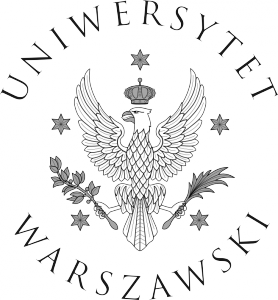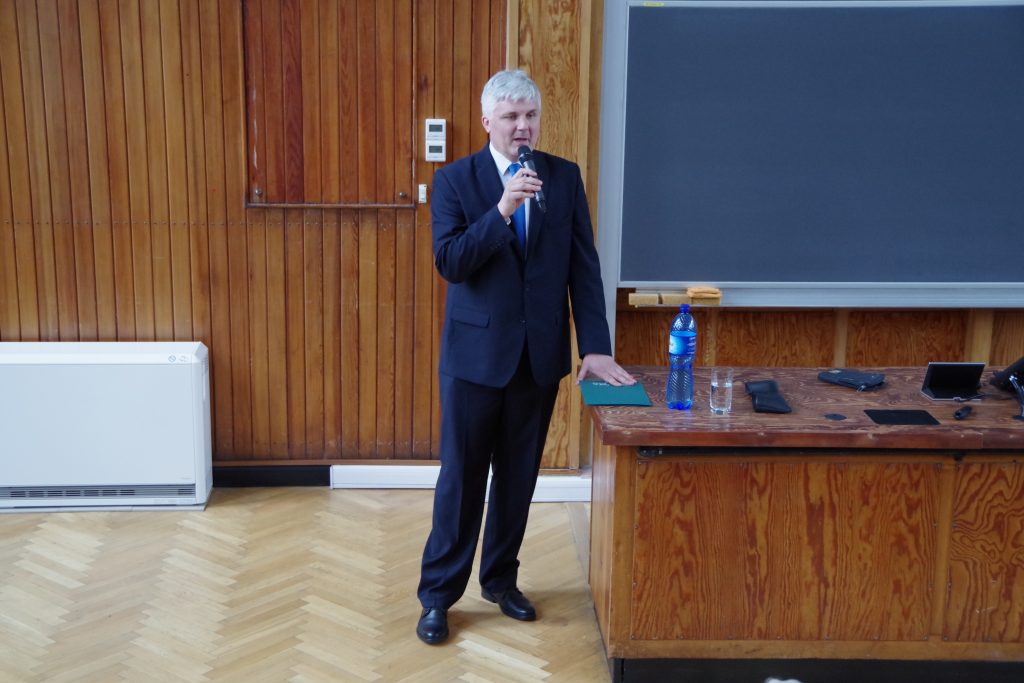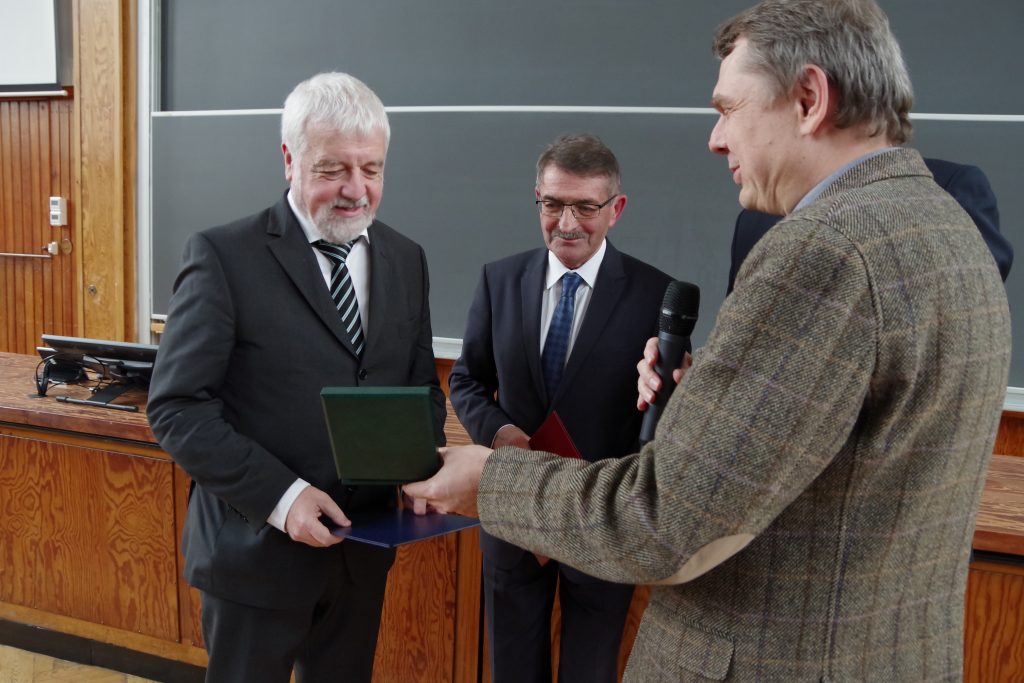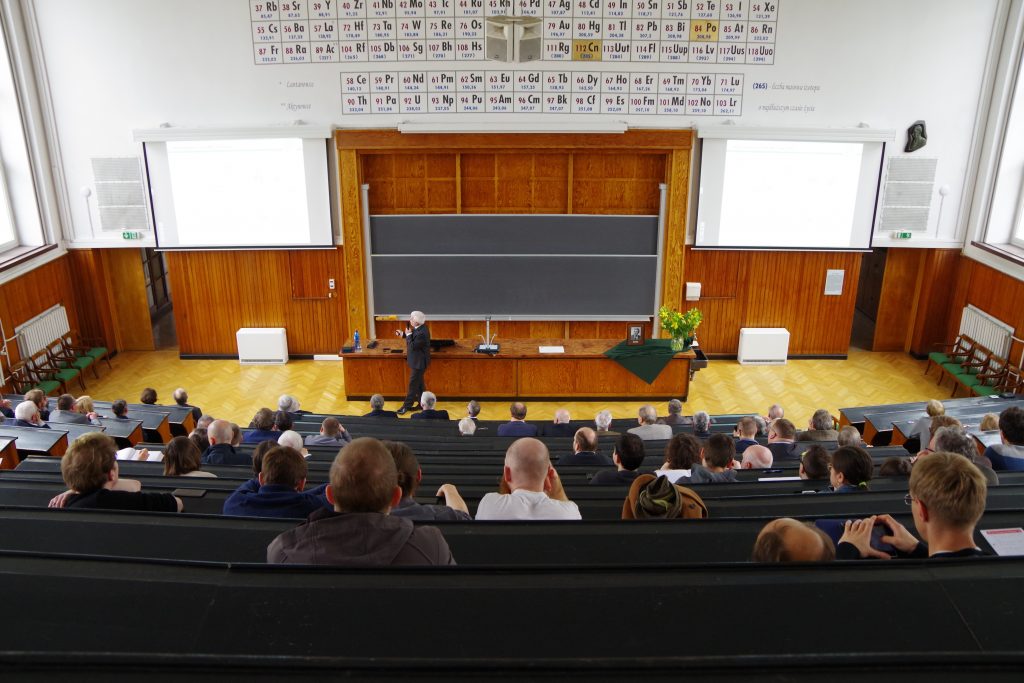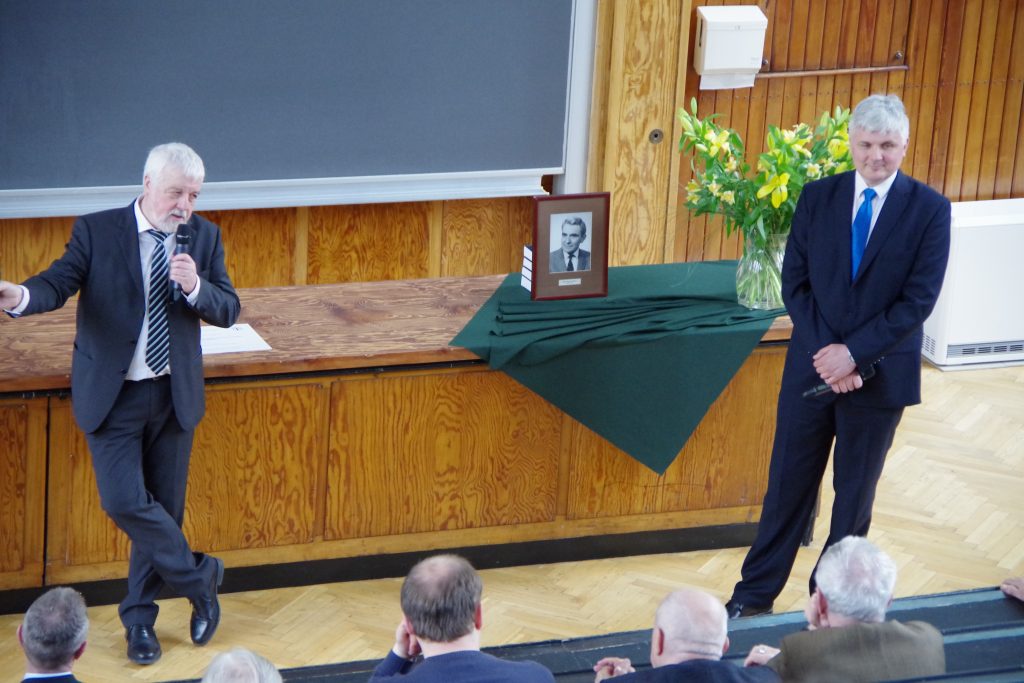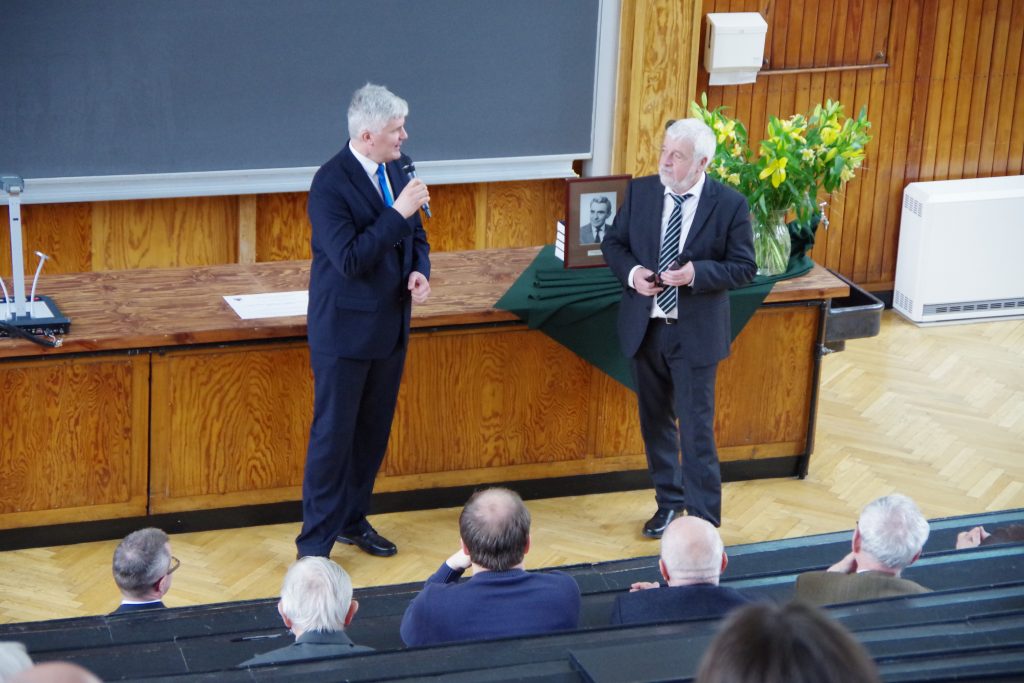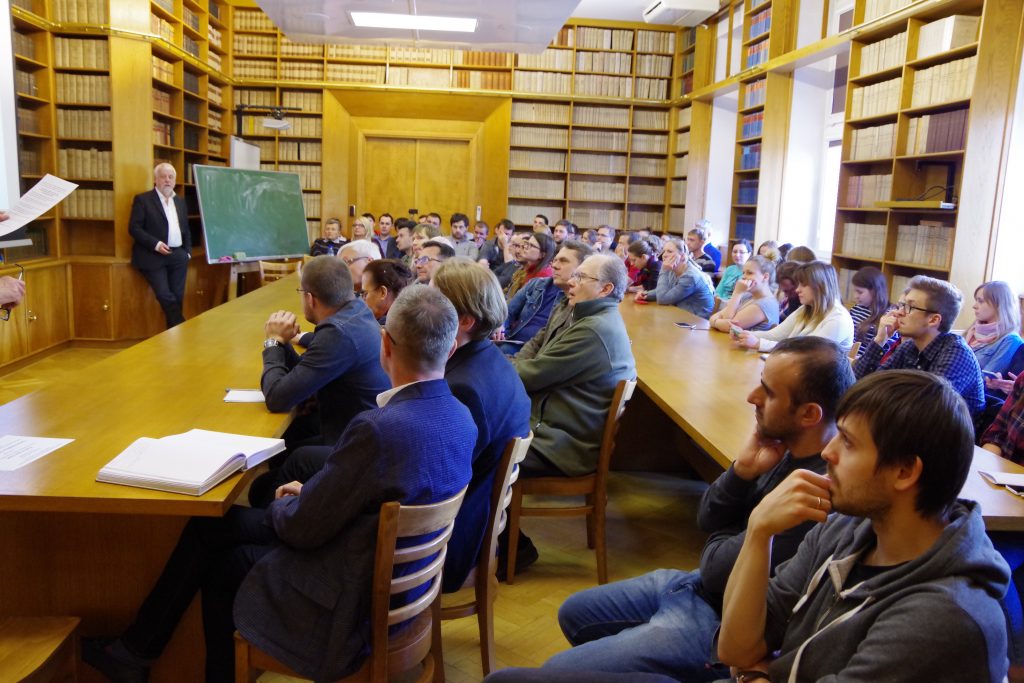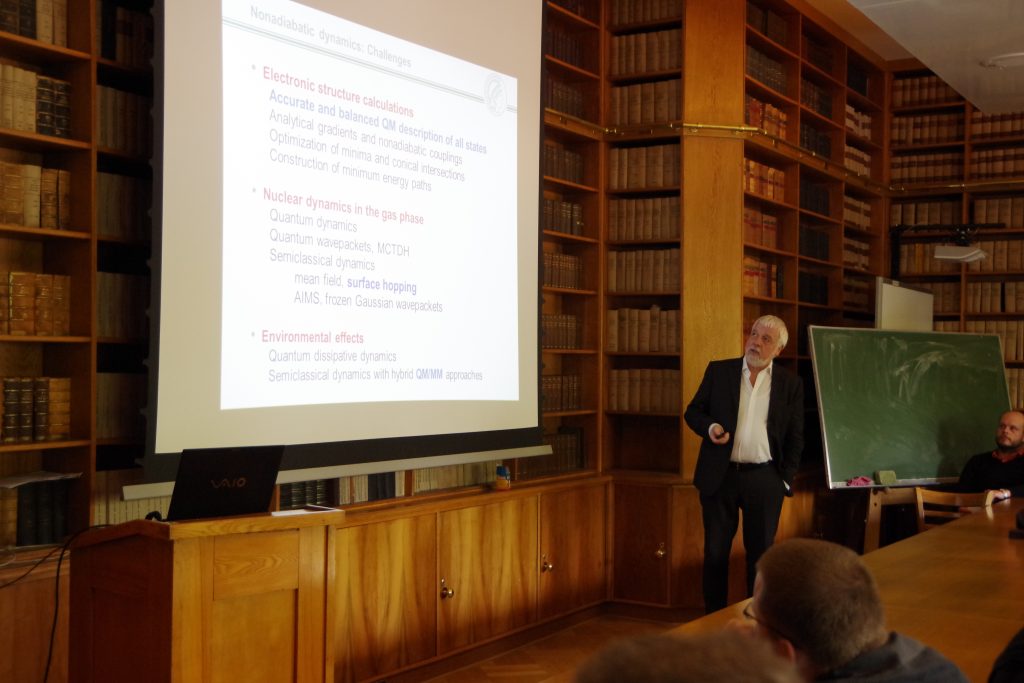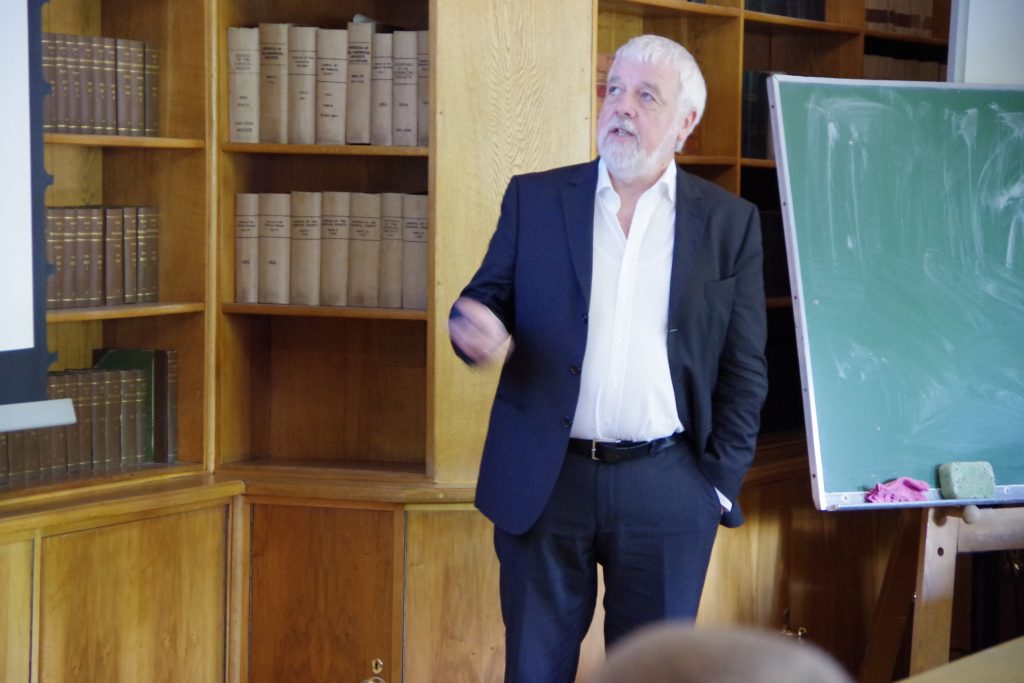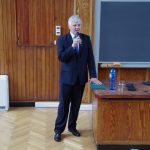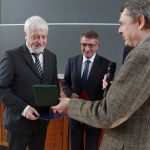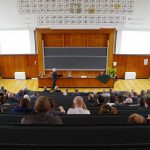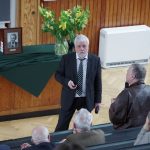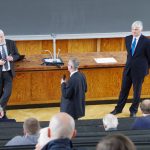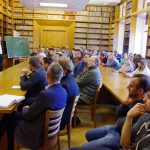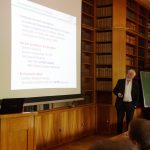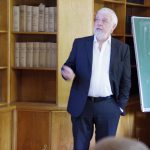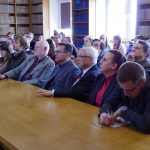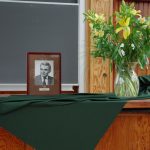Walter Thiel
LAUDATION
Mr. President, Mr. Dean,
Dear Walter and Elisabeth,
Ladies and Gentlemen,
It is a great pleasure and honor for me to have the opportunity to present this laudation and to tell you about the outstanding scientific achievements and the brilliant scientific career of Professor Walter Thiel – the 2017 Laureate of the Kołos Medal and Lecture Award. We are very happy that he is with us today and that he is accompanied by his wife Elisabeth.
Our Laureate was born in 1949 in Treysa, a small town in Hessen, West Germany. He received his Diploma from the University of Marburg at the age of 22 and, two years later, the Ph.D. degree from the same University. The subject of his Ph.D. Thesis was the theoretical modeling and experimental determination of photo-electron intensities. He turned completely to theory during the extremely successful postdoctoral stay with Michael Dewar’s group in Austin. After returning to Germany he obtained the habilitation at Marburg, and in 1983, at the age of 33, became an Associate Professor at the University of Wuppertal. In 1987 he spent a sabbatical at the University of California in Berkeley and at NASA Ames Research Center.
His outstanding research on semi-empirical methods in Austin and on rovibrational spectroscopy in Wuppertal was quickly recognized both nationally (he received the prestigious Alfried Krupp Award in Germany) and also internationally – in 1992 he received a call to become a Full Professor in Switzerland at the University of Zurich. He accepted the offer and his stay in Zurich turned out to be extraordinarily productive. In Zurich he established a solid foundation for the combined quantum-mechanics/molecular mechanics methodology (referred to by the acronym QM/MM) and for its later large-scale applications. Professor Thiel’s contribution in this area was recognized in 2013 by the Nobel Committee – in the released information the Committee stated that in the research awarded in 2013 “important contributions have been given not only by this year’s laureates but also by others” and included Walter Thiel’s name on the short list of these “others” (the laureates in 2013 were Martin Karplus, Michael Levitt, and Arieh Warshel).
In 1999 Professor Thiel had to make a very difficult decision. He received an offer from the Max Planck Society to become a director at the Max-Planck-Institut für Kohlenforschung in Mülheim, while the Swiss (that is the University of Zurich jointly with ETH) made a very powerful counteroffer. He finally decided in favor of the Max Planck Institute. As I understand, his wife Elisabeth contributed to this decision (for that, I think, she deserves a medal from the Max Planck Society). In addition to being a director in Mülheim, Professor Thiel holds the position of an honorary professor at the University of Düsseldorf.
A few words are in order about the Mülheim Institute. This is a remarkable institution, over one hundred years old, and according to current rankings one of the best among the 77 chemistry research institutions in Germany. During the first 80 years there were only three directors: Franz Fischer (from the Fischer-Tropsch process), Karl Ziegler, and Günther Wilke – towering figures of German chemistry. In spite of administrative duties, Professor Thiel established in Mülheim a large and immensely successful research group in the area of theoretical and computational chemistry. The main theme of its research has been the study of homogeneous catalytic and bio-catalytic processes using semi-empirical, QM/MM and density functional methodology. His group also achieved remarkable success in developing high-accuracy methodology for studies of rovibrational spectra of small molecules. Most of this research was done in direct interaction with experimental groups or was closely related to ongoing experimental work.
Judging from the literature response measured by the number of citations, the bio-catalysis research on the application of the QM/MM method to study the structure, reactivity and selectivity of cytochrome P450 enzymes has turned out to be especially fruitful. This work, done in collaboration with Professor Sason Shaik from the Hebrew University, resulted in the elucidation of the reaction mechanisms of these important enzymes and helped to resolve controversies concerning their catalytic cycles.
In view of his broad interests and many extraordinarily successful research projects it is not easy to select Professor Thiel’s greatest scientific achievements. I would make the following, of necessity subjective choice:
- Development and implementation of the semi-empirical methods based on the modified neglect of differential overlap (referred to by the acronym MNDO). The enormous utility of this work is evidenced by the fact that the main paper on the MNDO method received thus far almost 7000 literature citations. The source of success of Professor Thiel’s method lies in designing empirical parameters with well-defined physical meaning, rather than in ameliorating results by massive parametrization.
- Development of the QM/MM methodology combining quantum theory and classical mechanics approaches, in particular the solution of the problem of quantum-classical boundary and the connection with a polarized continuum. This work, I believe, was cited by the Nobel Committee in 2013.
- Development of high-accuracy computational methods for rovibrational spectroscopy of small molecules taking into account large-amplitude motion, tunneling and torsion couplings. This work has led to spectroscopic identification of previously unknown molecules and provided data of astrophysical importance.
- Elucidation of numerous processes of homogeneous catalysis involving metathesis rearrangement, enantioselectivity, and intricate stereochemistry.
- Application of the QM/MM methodology to the elucidation of mechanisms of numerous bio-catalytic reactions including the cytochrome P450 studies.
One could continue the list, pointing, for instance, at the important work on very large fullerenes but I stop at just five achievements here since any one of them would be sufficient for the Award.
The scientific talent and activity of Professor Thiel were quickly appreciated and led to invitations to many scientific committees, councils, and boards. He served as a member of editorial boards of scientific journals like: Accounts of Chemical Research, Theoretical Chemistry Accounts, Journal of Computational Chemistry, ACS Catalysis, and on advisory scientific boards of scientific institutions in Germany, Spain, Czech Republic, China, and Israel. He was also a member of the Board of Governors of the German Chemical Society and the chairman of the Association of German Theoretical Chemists. Presently Professor Thiel serves his second term as the President of the World Association of Theoretical and Computational Chemists (WATOC).
In recognition of his achievements, in 2007 Professor Thiel was elected to the International Academy of Quantum Molecular Sciences (Menton Academy). In the same year he became a member of the Deutsche Akademie der Naturforscher Leopoldina (that is the German National Academy of Sciences) and a year later he was elected to the Nordrhein-Westfälische Akademie der Wissenschaften.
It is not surprising that Professor Thiel received already numerous awards and medals. The most important of them are:
- Alfried Krupp Foundation Award
- Schrödinger Medal from the WATOC Organization
- Liebig Medal from the German Chemical Society
- Advanced Research Grant from ERC
- Robert Bunsen Lecture from the Deutsche Bunsengesellschaft
The newest addition to the list of his distinctions is the Kołos Medal being awarded today by the Polish Chemical Society and the Department of Chemistry, University of Warsaw. The Award Committee has decided that the 2017 Medal is bestowed to Professor Walter Thiel for
his outstanding contribution to the development of combined quantum-classical computational methods for complex chemical systems
Dear Walter, please accept my congratulations for this new distinction and also my and my fellow theoretical chemists’ sincere thanks for your fantastic contribution to our field of science. I wish you many further successes in your research and continued joy of making science and making friends with people pursuing this amazing scientific adventure of theoretical chemistry.
Bogumił Jeziorski

